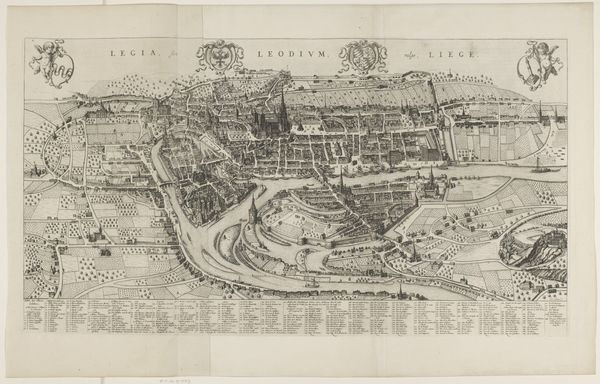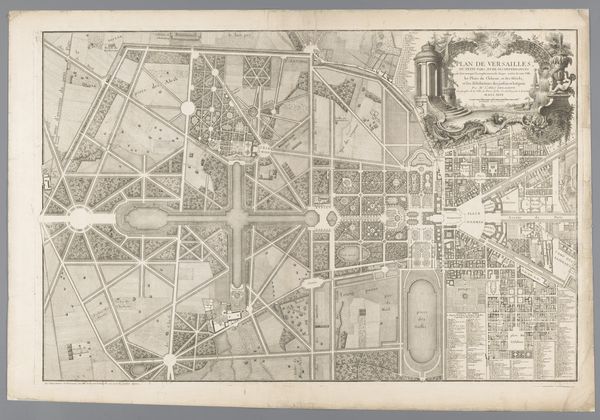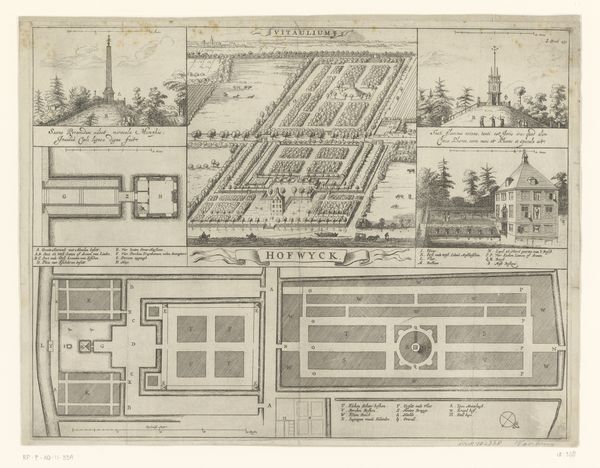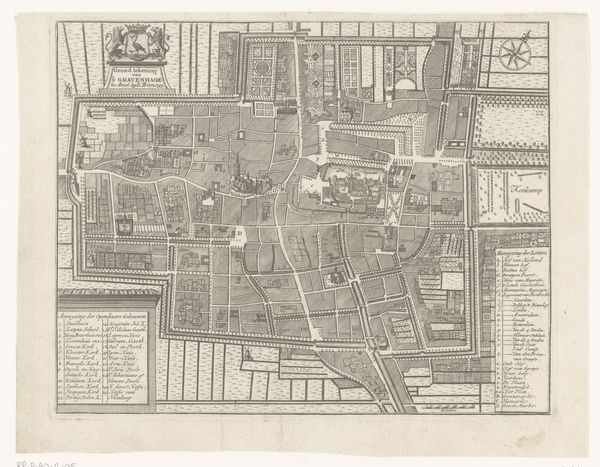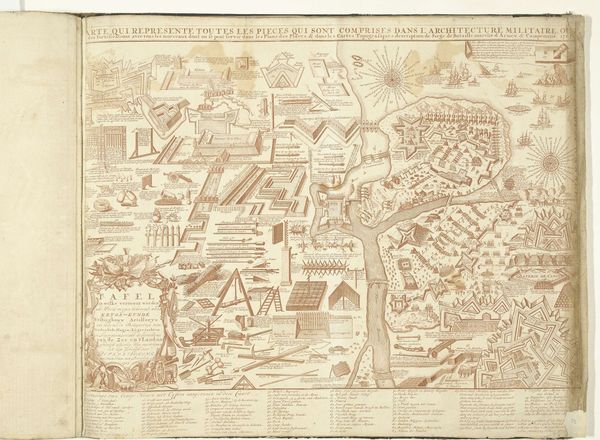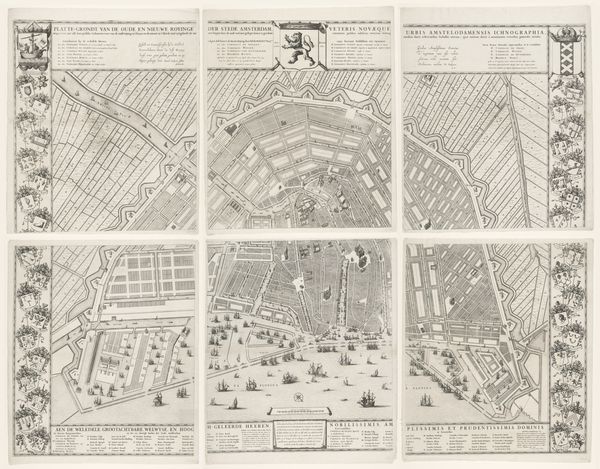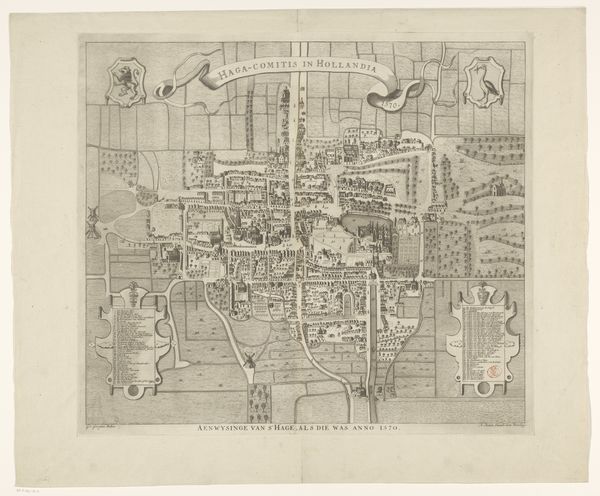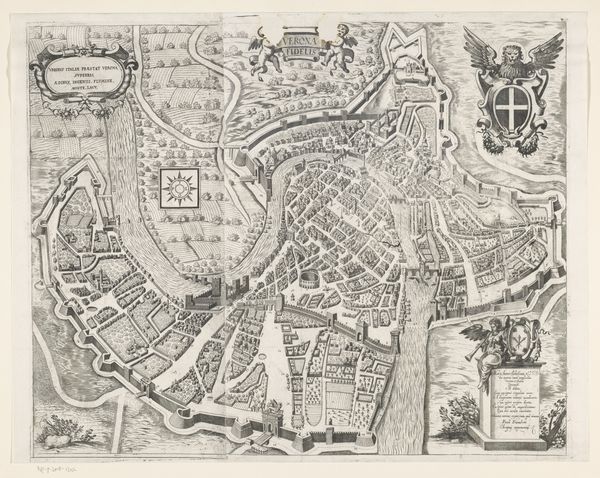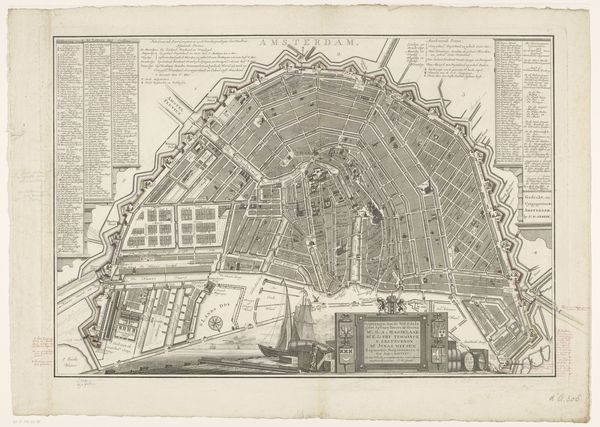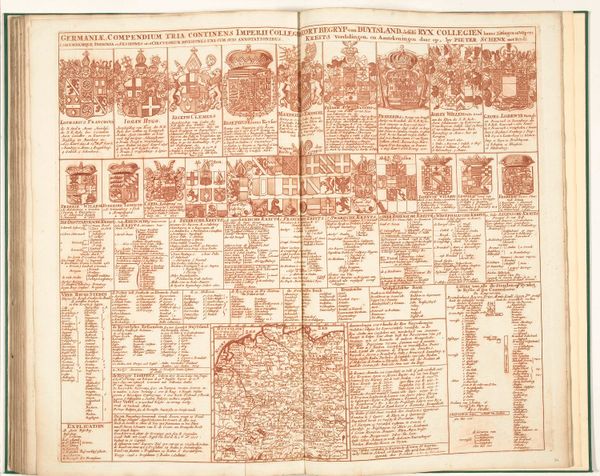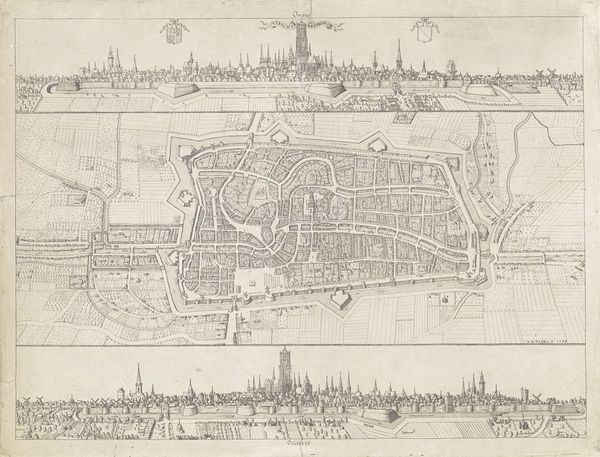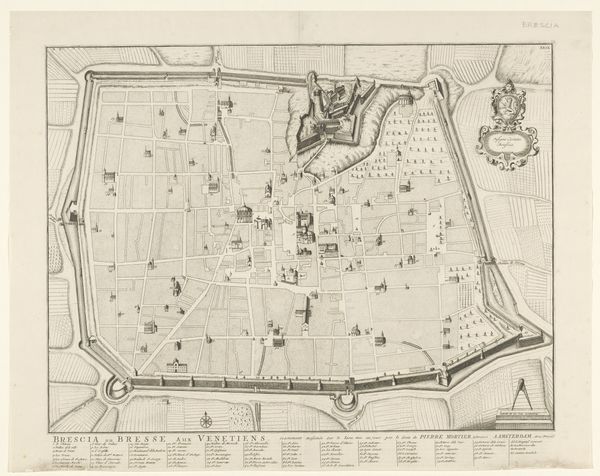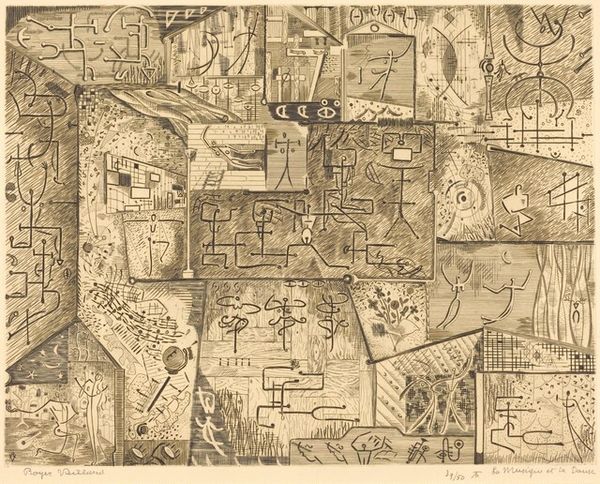
The seven pilgrim churches. Border decoration to a map of Rome 1634
0:00
0:00
print, engraving
#
baroque
# print
#
cityscape
#
engraving
Dimensions: 1850 mm (height) x 1300 mm (width) (monteringsmaal), 455 mm (height) x 725 mm (width) (bladmaal)
Curator: This fascinating engraving, dating back to 1634, is called "The Seven Pilgrim Churches. Border decoration to a map of Rome," created by Matthäus Greuter. The level of detail in rendering the cityscape is striking, especially considering the limitations of printmaking at the time. What catches your eye initially? Editor: It’s the overwhelming sense of order that jumps out. It's almost bureaucratic in its precision, more like an inventory than a celebration of Rome’s spiritual landmarks. I'm struck by how this presentation reinforces institutional power through organization and detailed categorization. Curator: I see your point about the institutional aspect, and yet, the layout feels rather dynamic. Each church seems almost like a distinct symbol within a larger narrative. We see, not only detailed architectural renderings of each, but textual components to remind people what it represents in history and devotion. There's also an intentional composition, a carefully crafted frame for the map it would accompany. Editor: Absolutely, each church as a symbolic power center, meticulously documented! Look how text and image combine. It reminds me of the ways Baroque era urban planning sought to impose a theological vision upon the chaotic reality of a bustling city. The church as a guide, controlling movement and belief. Curator: The choice of churches isn’t arbitrary. These “pilgrim churches” formed a devotional itinerary, and mapping them reinforces this physically and psychologically. It connects spatial experience with spiritual devotion, shaping collective cultural memory through a visual representation. Editor: Right. Pilgrimage wasn't just a journey but a performance of faith, and this map scripts that performance. This map would assist in orientating foreign male elites with access to money who travelled on the Grand Tour, reinforcing a kind of theological and social exclusivity. The act of pilgrimage, even depicted on paper, mirrors broader socio-political structures of that era. Curator: That's an important consideration - these maps circulated within a particular social strata. By tracing these routes through art, visitors performed both piety and high social status. What this piece ultimately reveals, beyond its aesthetic qualities, is the interwoven nature of religious devotion, urban space, and power dynamics in Baroque Rome. Editor: It’s a potent reminder that even what seems purely religious or aesthetic is invariably embedded in broader socio-economic and political realities. Looking at art, even from centuries ago, encourages us to analyze the mechanisms through which power is maintained and negotiated. Curator: Indeed, this detailed print encapsulates an entire worldview – beliefs about God, the purpose of life, and social hierarchies of power. And reflecting upon this helps me more fully appreciate this seemingly simple border decoration to a map.
Comments
No comments
Be the first to comment and join the conversation on the ultimate creative platform.
